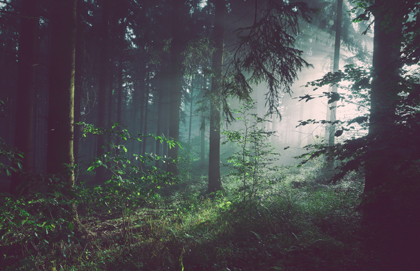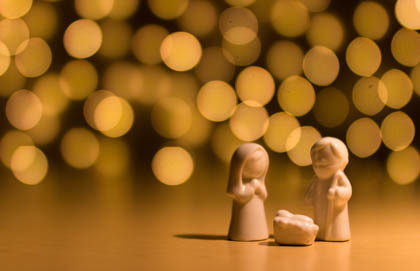Christmas in Palestine looked nothing—nothing—like the way we picture Christmas today. There was no snow, there were no jingle bells, no jolly fat men, and definitely no turkey. And it’s likely that, in a town where hordes were coming in to register with the empire, the night was not silent.
Our picture of Christmas is shaped, in large part, from the transference of imagery from Europe. We in North America are so accustomed to the tableau of images from Europe that we rarely stop to think of how an event in a little shed in a dry and dusty town in Palestine came to be associated with candles, snow, and green boughs.
The fact that these images shape our understanding of Christmas is a testament to the power that images wield over our minds, our habits, and even our houses. It’s not an accident that Christianity co-opted the pagan symbols of green boughs and fire to help tell the story of the incarnation.
On Sunday, at our church’s lessons and carols service, we listened to a rendition of one of the first attempts to create a native tableau for the Christmas story in North America: Jesous Ahatonhia, or the Huron Carol.
The first verse is striking:
'Twas in the moon of winter-time
When all the birds had fled,
That mighty Gitchi Manitou
Sent angel choirs instead;
Before their light the stars grew dim,
And wandering hunter heard the hymn:
"Jesus your King is born, Jesus is born,
In excelsis gloria."
The picture of angel choirs emerging into the cold, dark forests is striking. You don’t expect to hear singing in the bush in December; you expect silence. And the other pictures given—a child wrapped in threadbare skins in a drafty, cold lodge, great chiefs bringing luxurious furs—are equally impactful.
It’s no accident that this song was composed by a Jesuit priest. The Jesuit discipline of prayer uses imagination and images as a core part of its devotional life.
As many people fight over whether Pope Francis—another Jesuit—is a member of the “right” or “left,” I wonder if we might not be missing the point. Perhaps he is merely continuing to point a way forward for the evangelism of a culture which understands Christmas through images of wealth, plenty, and convenience, and a strict ledger of good and bad.
Might we—Christians of all blood types—understand Francis as a modern Brébeuf? If so, what images will Christians provide to North Americans in the reflektive age? Which will be as striking and surprising as those shared with the Hurons so many years ago?






